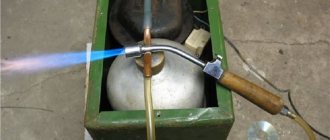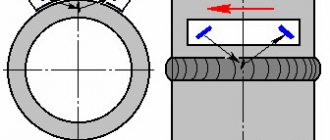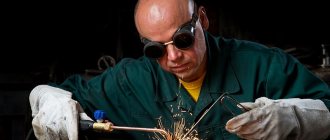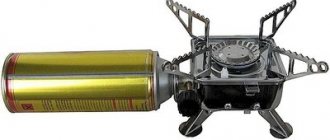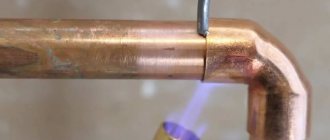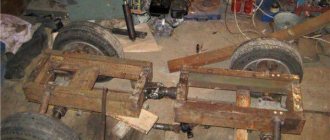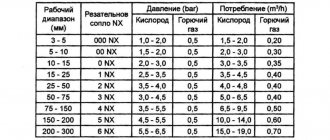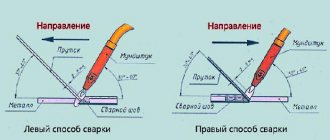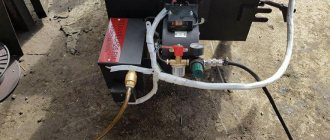- Gasoline or running on other types of liquid fuel.
- Gas powered.
- Multi-fuel.
The latter type of burners is designed to operate on various types of fuel. It just so happened that gasoline devices appeared a little earlier than gas ones. Despite the fact that quite a lot of time has passed since the advent of gas burners, gasoline burners are still used in our time.
Moreover, they are not just used, but used more and more intensively. The thing is that each type of burner has a number of advantages and disadvantages. Under certain conditions, gasoline burners show better results and high efficiency. This article is aimed at introducing readers to the advantages of gasoline burners.
Design and principle of operation of a soldering torch
The soldering torch is designed to connect metal parts using liquid metal. Soldering can be carried out by two types of solders: low-melting solders, which are hard solders, and refractory, which are hard solders.
To perform soldering with low-melting metals, various types of soldering irons are used. To work with refractory solders, high temperatures are required, which can be achieved with a soldering torch.
There are several different types of this device. All of them operate on different types of fuel, allowing them to achieve high temperatures.
The most common are soldering torches that run on gas and a gasoline-air mixture.
The principle of operation of a gas burner
An ejection-type gas burner is designed for high-temperature types of soldering. Its operation is carried out from a gas cylinder containing liquefied gas. This type of burner is quite economical, which affects the cost of soldering metal parts. The burner design allows you to regulate the volume of gas passing through the ejector.
The operating principle of a gas-powered burner designed for soldering work is quite simple.
From the reducer, located near the cylinder containing a liquefied propane-butane mixture, gas flows through a hose to the incoming fitting, which is built into the base of the device.
The needle is controlled using a special holder installed on the body of the flame formation device. The incoming gas passes through the nozzle at high speed and is expelled from its opening. By increasing the flow rate of the gas flow, the air required for combustion is sucked in through a special device - an air spool.
After passing the nozzle, the gas moves through a special channel to the divider, which divides it into the main and auxiliary. The main thread is central. The auxiliary flow powers the peripheral holes in the divider. An auxiliary flow is required to maintain the temperature of the flame in the soldering area.
Using a special spool sleeve, which can be rotated, you can easily dose the volume of air oxygen consumed, and the volume of gas is regulated by a needle. The ability to adjust the gas mixture allows you to obtain flames of various qualities and sizes.
Step-by-step manufacturing process
The following is the sequence of operations for manufacturing a gas-air burner:
- The body is made on a lathe or milling machine; on one side it must be open, on the other it must be closed with a plug.
- A hole is drilled in the plug. Its diameter should exceed the outer diameter of the nozzle by fractions of a millimeter. It should fit tightly.
- A ring of fine wire mesh is placed inside the housing.
- A limiter and a bushing with a hook are cut out of a sheet of metal.
- The handle is made from dense wood.
- The tube is passed through a hole in the housing so that its end becomes the burner nozzle.
- The end of the tube is sealed with refractory solder.
- a 0.2 mm hole is drilled in the solder. You can solder a ready-made jet of suitable diameter into the end of the tube.
Do-it-yourself gasoline burner assembly
You can make refractory solder yourself from finely chopped pieces of copper and zinc. Zinc is taken from the battery glass, crushed and poured with weak hydrochloric acid. Then copper and borax are added. The resulting mixture is calcined in a crucible.
Gasoline burner: advantages and disadvantages. DIY tips:
A gasoline burner is a device whose operation is based on combining liquid fuel vapor with oxygen to produce stable combustion. When traveling, it is extremely convenient to use ready-made, factory-assembled devices. However, if desired, you can make the burner yourself.
An autonomous device is useful in places where it is prohibited to make fires or there is no firewood. A gasoline burner produces a flame level that is almost invisible. However, its temperature is quite sufficient for quick cooking.
Advantages
A petrol tourist burner is becoming the choice of climbers, ice fishing enthusiasts, as well as travelers who go on long winter hikes. Liquid fuel devices can operate efficiently even in arctic cold.
Among other advantages of gasoline burners, it is worth noting:
- Possibility of ignition at extreme heights.
- Availability of fuel, use of alternative solutions in the form of kerosene or alcohol.
- Low cost of refueling compared to gas models.
- Low tare weight.
- Particularly simple design.
Flaws
A gasoline burner has some obvious disadvantages. The need to use high-purity fuel comes first. Clogging of the narrow throttle opening for gasoline flow to the steam generator can become a real problem when you need to quickly ignite the burner. Cleaning the system can resolve the problem. However, this takes time.
The gasoline burner requires careful handling. When pouring fuel into a container, fuel often gets onto the body of the device. This may subsequently cause unwanted combustion.
A gasoline burner produces uneven flames. Therefore, it is recommended to use such devices inside tents only as a last resort. To this is added an unpleasant effect in the form of the spread of a specific odor and black soot.
Experimental conditions
The most important thing we have achieved is that we have found the conditions that must be observed in order to minimize the error of the experiment at home. We also did not arrive at many positions immediately. Please, if you want to check and supplement our research, use the information from this section.
- Water for experiments should be prepared in advance. Pour water into the containers (I filled the bathtub) in advance and let it stand for several hours (for a bathtub this is at least 6 hours, usually I poured it a day before the experiments) so that the entire volume of water becomes the same temperature. It is unacceptable to pour water from the tap, even while maintaining the position of the mixer; the temperature of the water in the pipes changes. You should not artificially prepare water by heating or cooling it to a certain temperature. This is labor-intensive and extremely difficult to make the entire volume of water at exactly the same temperature. Observations with a thermometer show that even a seemingly boiling volume of water in a pan is not always evenly heated - the temperature at the bottom of the pan and on the surface is different.
- Due to the peculiarity of water preparation (aligning its temperature with the temperature in the apartment, and specifically in the bathroom), it should be taken into account that the initial water temperature is the same only for a series of experiments carried out on a specific day.
- Also, you should not rely on the “visual” boiling of water. Active bubbling, recognized by all experimenters as boiling, in practice turned out to be 97 degrees in the average thickness of a 3-liter can, and in a radiator vessel the water begins to bubble already at 90-92 degrees (more on this below in the section on radiators). We created a device based on an electronic thermometer (Thermometer model DS18B20, the rest of the electronics are on Arduino), which allows you to accurately measure temperature and write a boiling log into memory, based on which you could build graphs. The device set a boiling mark when the temperature reached 97 degrees, since it was rarely possible to achieve more, and in practice a person would have long removed such a kettle from the stove, visually identifying the water as boiling. (also see below about pressure).
- The volume of water in the pan should be determined using an electronic scale. Manufacturers of utensils place risks symbolizing the filling of the vessel to a certain volume, often from the canister. It will also be difficult for you not to tilt the pan so that the water only reaches one edge.
- Also record the consumption of gasoline or other fuel using electronic scales.
- An open window between two different experiments affects the result.
- Unless specifically stated, we used factory-filled gas cylinders that were less than 50% used up. In the case of boiling with liquid fuel, the canisters were filled to at least 50%, and the pressure in them increased depending on the experimenter’s opinion at the moment about the need this action in order to maintain maximum burner power. Each new day of testing, cleaned multi-fuel burners were used.
- Kitchen stoves connected to the main gas pipeline are significantly inferior in power to tourist burners. (Apparently, this is due to the fact that the pressure in the pipe leading to the apartments is not increased high for safety reasons.) The second burner turned on reduces the power of the first one, because the pressure in the pipe going to the stove does not change. This should be known to those who want to test cookware or the influence of some external conditions on boiling, and not the burners themselves.
- Tests on 1 liter of water are not very informative. The difference in boiling such a small volume of water in different pans with different burners will often be so small that it can be attributed to experimental error.
- Pressure was not taken into account during the experiments (we were just glad to have the opportunity to gather together, where to guess the required atmospheric pressure, but unfortunately we do not have a pressure chamber with ventilation). In the attached file, anyone can find the date of each experiment and find barometer readings on that day in the south-west of Moscow on the Internet on the weather archives website. The altitude of most experiments was 224 meters above sea level. (According to: https://www.etomesto.ru/map-moscow_relyef/ + apartment height)
So, what did you learn for practice? For some there will be nothing new, for others, perhaps, some myths will be debunked.
What to look for when choosing a gasoline burner in a store
Try to choose those models that have a detachable connection between the burner and the pump
This will make it easier to disassemble the device for cleaning if necessary. Estimate the time it takes to boil a liter of water under relatively normal atmospheric conditions. Estimate gasoline consumption over a certain period of burning time. Knowing the weight of the burner and its dimensions will allow you to evaluate what kind of dishes can be heated on it and how convenient it will be to carry the burner with you. It is important to have spare parts for possible repairs. A positive circumstance when choosing this device would be the presence of wind protection. The use of gasoline burners is often more convenient compared to their other types
However, we must not forget that they require care and, if possible, gasoline of normal quality. Of course, they work in almost any conditions, but proper operation and regular cleaning will allow you to use them comfortably for a long time.
Using gasoline burners is often more convenient than other types. However, we must not forget that they require care and, if possible, gasoline of normal quality. Of course, they work in almost any conditions, but proper operation and regular cleaning will allow you to use them comfortably for a long time.
Why do you need a gasoline burner when fishing?
- Why do you need to carry extra weight with you? You can cook food on a fire, keep warm and dry clothes after bad weather. Fishing situations can arise in a variety of ways. Let's imagine how to light a fire after heavy rain. The branches are wet through. It is not at all clear how in such a situation one can light a fire or maintain it for the required time. On the other hand, if you have this device, then you can light it in any weather. Also, with its help it is not difficult to cook food or warm a tent before going to bed.
- Let's imagine a different situation. Fishing continued until late at night. Everyone is very tired and will need to get up early tomorrow. Does it make sense to bother with lighting a fire? At the same time, you can use a gasoline burner without any special preparations.
- Also, if you stay in one place for a long time in cold and wet weather, it will be convenient to use such a device to make tea or coffee even in the most difficult conditions.
Wind screen as thermal
The benefit of a wind screen for its intended purpose is quite obvious to anyone who has used a burner in the mountains or simply in the wind. We were interested in whether it works not only as protection from the wind, but also as a screen to retain heat. Those. Does it make sense to use wind protection inside a tent, at home, where there is no wind?
Seems to be yes.
The gain in weight seems insignificant, but in practice you will take wind protection on a hike either way, and the question is usually whether to install it now or be lazy.
How to do it yourself?
You can not only buy gasoline burners, but also make them yourself. A similar model usually consists of a compressor from a refrigerator, an acetylene tank, a cutter and copper elements. Today, there are many ways to assemble such a device with your own hands. One of the simplest is to use tin cans, cotton wool, fuel and screws.
Here is the sequence of manufacturing a gasoline burner.
- First of all, you need to thoroughly wash the jars and clean them of dirt. Now we take an ordinary drink can and cut off its top part, leaving only a third of the bottom. We make four holes using a screw.
- We also remove the top of the second can and install it bottom up. We put cotton wool in the middle and cover it with the first jar on top.
- Through the hole created on the top can, cotton wool is soaked in gasoline, and the torch begins to burn.
Thus, a gasoline burner, even a homemade one, has a huge number of advantages, among which it is worth noting mobility, power and efficiency
During use, it is imperative to pay attention to safety precautions. In the selection process, you need to pay attention to the presence of a nozzle, how the device works, and also study the drawing to understand how to light or ignite the burner
In addition, if desired, you can assemble a gasoline-air and acetylene mini-burner with your own hands.
For more information about gasoline burners, see the video below.
Boiling in an oval pot
Boiling in a container whose diameter is smaller than the diameter of the burner flame crown is extremely ineffective and can only be used in extreme cases. So most of the energy goes past the pot. This often happens when a mug or pot of coffee is boiled on a burner or a narrow oval pot is placed.
A wide oval pot does not heat up evenly if the burner is placed in the center (it is no coincidence that household pots for round burners are also round, so that the heat does not escape into the atmosphere), so some people practice boiling an oval pot (intended for a fire) on two burners, which may give a gain in time (or may not), but always leads to increased fuel consumption.
The experiment with 1.9 liters was carried out twice (results via /)
The most likely situation is that you will have to boil a large volume of water in an oval pot, for example 4 liters
There are no typos in this table, in the first experiment the times actually coincided, but in the second they forgot to weigh the Kovea Booster cylinder.
Apparently, the efficiency of the burners strongly depends on the flow of oxygen, which two adjacent burners take away from each other and the gasoline does not burn completely.
In general, the popular option of boiling an oval can on two burners looks dubious. Although it is often used by groups that not only did not buy a burner duct (round), but also use cheap gas hose low-power burners. Perhaps this method will work for them, since their burners are unlikely to boil the pot one at a time, you just need to know that you need to carry more gas. (The usual story - either you spend money on equipment or carry heavy loads).
The advantage of a gasoline burner over a gas burner
- If you have to use air transport services, you won’t be able to transport a gas cylinder. This is prohibited by the rules. On the other hand, fuel for a gasoline burner is not difficult to obtain locally. Gasoline fuel is much more affordable than purchasing gas cylinders.
- As the gas reserve in the cylinder is consumed, the operation of the gas burner deteriorates. This does not happen with gasoline.
- If you find yourself far from civilization, then it is possible to get gasoline, but purchasing a gas cylinder is very unlikely.
- Gasoline burners are characterized by relative compactness and low weight. This allows you to conveniently carry them in a backpack.
Ability to work at low temperatures
Where there is rarefied air or at low temperatures, a gasoline burner works flawlessly, while a gas burner will either work poorly or not at all.
Radiator
A pan with a radiator saves up to 40% of fuel and time when boiling water and up to 50% when boiling from snow. The longer you boil (larger pot/weaker burner/stronger frost and wind), the greater the gain.
Boiling 1.2 liters of snow
As you can see, the radiator dishes definitely work, but the lid practically did not play a role in such a small volume without wind. Splashes on the graph – stirring with the water sensor, adding snow, etc. (In all these experiments we boiled on a multi-fuel burner on nefras).
Again it is clear that the radiator works faster, but the lid on the radiator dish “does not have time” to have a significant effect.
Active bubbling of water in the radiator vessel begins long before the temperature reaches 99 degrees (at approximately 90). Apparently, this is due to the fact that lower layers of water heat up faster and reach the state of steam earlier than mixing and uniform heating of water throughout the entire container occurs. If in field conditions the task is to disinfect water in radiator dishes, you should take this into account (stir the water in the pan, let the water boil).
Radiator large pan vs small Jet Boil pan
We compared two competing options: prepare 3 liters of boiling water at once in a large radiator pan on a gasoline burner, or boil three liters in a row in a Jet Boil and similar systems. (In reality, boiling water prepared using one of the methods is poured into a large saucepan, where food is already cooked/tea is brewed).
In terms of time, everything is clear - a clear win for the system with a large pan.
With weight everything is trickier. First of all, this is again not a typo. The consumption was the same everywhere. But in the case of gas, we spend gas in heavy iron cylinders (a Kovea cylinder with 450 grams of gas weighs 665 grams), and in the case of gasoline, gasoline from a plastic bottle. And what about the weight of the pots and heavy multi-fuel, and that second burner where the cooking will take place? Calculate based on your equipment, number of participants, duration of the trip, planned fuel consumption, and cooking method. It turned out that for a group of 10 people, the option with a large pan on a gasoline burner will almost always win.
Gasoline blow torch
A gasoline burner is designed for the process of high-quality fastening (soldering) together of metal components of a single structure using molten metal. The solder used for soldering has a solid physical state and can be either low-melting or refractory.
Design and principle of operation
When purchasing a gas torch for metalworking by soldering and welding, you should not assume that the kit contains all the elements necessary to organize the work. Since each gas-air burner apparatus has individual drawings, and there are no clearly defined design standards, we will consider the basic (simplified) set of working elements:
- tank for storing gasoline (fuel);
- air compressor;
- gasoline blow torch;
- gas-resistant hoses providing fuel supply,
- stand.
A gasoline burner is a heating device in which the combustion process of gasoline converts it into a gaseous state. Combustion occurs in the evaporator, where oxygen is supplied from the air by a nozzle. As a result, a gasoline-air flammable cocktail is formed, a mixture of the combustion product of gasoline and air, which is involved in the soldering process. The rotary tap located on the handle functions as a regulator of the direction and power of the flame.
Benefits and safety of work
Heating devices for soldering, the initial fuel of which is gasoline, have become widespread in various fields due to their ease of use and thermal performance.
A positive characteristic of the heating device is the ability to operate without preheating.
Advantages of gas burners:
- relatively small weight and dimensions of the device;
- portability and ease of use (compared to its gas counterpart);
- high-quality soldering and welding of metals.
The disadvantage of using the device is the presence of the smell of gasoline in insufficiently ventilated areas. When working with a gas burner, it is prohibited:
- operate the device as intended if a gasoline leak is detected;
- use substances not specified in the instructions as fuel;
- allow the fuel tank to heat up to 500C;
- refuel while soldering or open the container when the evaporator is not cooled down;
- Use in closed or unventilated areas.
Application area
Hard-melting solders and various metals and alloys (brass, bronze, etc.) can easily be soldered with a gas torch. The unit carries out heat treatment (hardening) of small tools, is used in the artistic processing of wood, and even softens glass.
A separate group is represented by tourist burners (primus), they come in gasoline, gas and multi-fuel types.
Burner classification
The design features of the burners depend on what type of fuel is used. For example:
- There are burners that operate exclusively on gasoline and no other fuel.
- There are designs that, in addition to gasoline, also use kerosene.
- The operation of any type of burner requires a special device capable of maintaining pressure on a constant basis. Due to this factor, these devices are classified according to this method.
- There are designs in which there is no pump, while other devices are equipped with a pump.
- Burners are also classified according to the method of fastening the fuel container.
- Some types of burners are designed so that the fuel container is located separately from the burner and the fuel is supplied to the burner through a hose. There are burners where the fuel container and the burner form a single structure.
How to use?
Before you start using the burner, you must carefully read the instructions and recommendations of the manufacturer. A distinctive feature of such equipment is that it can be used exclusively in open areas.
If you need to operate a gasoline burner in an unventilated area, you can turn it on for a short period of time, and then thoroughly ventilate it.
In order to ensure maximum safety when using the device, you must strictly follow the operating instructions. Otherwise, a fire or explosion may occur.
Let's look at the process of using a gasoline burner.
First of all, it is necessary to refuel the equipment with the appropriate fuel. It is best to use high-quality gasoline so that the device does not fail and there are no problems. Under no circumstances should the tank be filled completely; filling 3/4 full will be sufficient. The remaining space is necessary to create pressure during operation. Creating pressure using a special pressure pump, which is usually included with the device. For this, 10 pumpings will be enough. After the necessary pressure has been created, you will need to pour fuel into the tray. Alcohol is considered the ideal option, as it does not produce much soot. After ignition, the burner will heat up the evaporator. The needle valve can now be opened
At this stage, be sure to pay attention to the fuel, which must be gaseous. Be careful that there are no drops here.
If they are detected, the heating process will need to be carried out again. During the work, it is imperative to monitor the torch, increasing or decreasing its power, using a shut-off valve for this. If the operation of the burner cannot boast of stability, or attenuation is constantly observed, then the nozzles should be cleaned with a special needle. After finishing the work, you need to extinguish the torch. To do this, simply close the valve.
In order to ensure the maximum level of safety during operation of the equipment, it is worth adhering to safety regulations.
- Under no circumstances should you continue to use a gasoline burner if a fuel leak is detected.
- It is not recommended to use fuel whose quality properties differ from those recommended by the manufacturer.
- Do not use the burner for a long time. This may cause the cylinder to become very hot and cause it to explode.
- Before starting operation, it is worth checking the integrity of the safety valve each time. If problems are detected, it is better not to turn on the equipment.
- It is better to refrain from using a gasoline burner in an unventilated area.
Prevention of clogging
- During operation, the gasoline burner may become clogged, so it is better to use high-quality gasoline with a high octane number.
- If you use special additives for gasoline, you can solve the problem of burner clogging. Similar additives are used in injection engines.
- To prevent the burner from failing at the most inopportune moment, it is better to clean it after use.
Gasoline torches for soldering and everything connected with them
The gasoline soldering (smelting) apparatus is designed to form a gasoline-air combustible mixture. A gasoline torch for soldering and melting metal runs on a gasoline mixture. These burners offer convenient flame adjustment using a rotary tap located on the handle.
Advantages of the device
Advantages:
- The device is portable;
- Low weight of the device;
- Ease of use;
- High-quality result upon completion of soldering (melting).
Gas burner device
Components:
- Gasoline tank;
- Air compressor;
- Gasoline hoses;
- Burner.
Please note that torches and hoses, as a rule, are not included in the kit for gasoline soldering. In this regard, the purchase of these elements is made separately
Do-it-yourself gasoline torch for soldering
Purchasing a ready-made gas burner is not always possible (for various reasons). In this case, it will be useful to know that you can make a gasoline torch for soldering yourself. Note that homemade gasoline devices are no worse than purchased ones. A DIY device is just as effective.
If you bring a lit match to the spout of a gasoline burner, you will be able to see a fire instantly flare up. Steady combustion of gasoline will continue for five minutes (+/-2 minutes). The flame temperature at its tip will reach more than 1000° C.
Note that with such a burner you can easily melt hard solders, heat treat small tools, melt various metals, solders, and even soften glass.
There is no need to make many parts of a homemade gas burner, since they can be borrowed from other things. For example, homemade parts such as a rubber bulb can be made from a spray bottle.
The homemade burner device contains:
- Frame;
- Sleeve with hook;
- A tube;
- Emphasis;
- Pen;
- Rubber ring;
- Balloon;
- Pen;
- Rubber bulb;
- Filler.
Manufacturing:
The burner body can be turned on a lathe
Steel of any grade can be used as a material for the manufacture of this important part. It is worth paying attention to the fact that the body of the part is composite (one end is open and the other is closed with a plug). There is a hole in the plug, the diameter of which is 0.1 millimeters larger than the outer diameter of the tube. Using this quality, the body can move along the tube quite tightly, while maintaining tightness. A ring made of metal mesh and slag wool must be installed inside the housing. Next you need to make a sleeve with a hook and a stop
You can use a steel sheet for this. The burner handle, which is essential for a gasoline device, is carved from beech or oak. The holes for the tubes (2 pcs.) are drilled very carefully. Thus, the axes of the holes should be strictly parallel. The finished handle is sanded and then coated with several layers of colorless varnish. Next, it is necessary that the end of the tube, which is passed inside the body, forms a nozzle. If you have PMTs-54 hard solder (adheres well to steel), try to solder the end of the tube with it, and then drill a 0.2 millimeter (diameter) hole along the axis of the tube. You can make your own solder. It must be said that solder consists of copper and zinc. In order to get zinc, you can use cups from an old electric battery. You need to empty the glass of its contents and then heat it over the fire. Next, you need to lower it into cold water, and then into a weak solution of hydrochloric acid. A clean glass is cut into pieces with scissors. Thus, we obtain zinc. Now it's up to copper. To do this, do the following: take copper wire; anneal it on fire; Finely cut the wire using scissors. Now you can pour pieces of copper and zinc into the crucible, maintaining equal proportions, after which you need to sprinkle with borax. Metals can be fused using a burner. After this, you will need to cool the resulting block and secure it in a vice. Then use a hog file to file it on all sides. The resulting sawdust must be mixed with borax.
Homemade gasoline burners like these will work great if done correctly.
Please note: if you do not have enough experience working with flammable materials, it is advisable to use commercial gasoline burners
Manufacturing of burners
A gasoline burner is made in several ways, but a beginner in this business should choose the simplest one, which does not require plumbing tools.
First way
Making a burner
Take two empty tin cans of any drink, condensed milk or beer, after cleaning and rinsing with water. After this, you need to wait for the jar to dry thoroughly. In the center of the bottom of the first jar we make 4 punctures using a nail, then the same holes will need to be made along the entire perimeter of the rim of the jar. This will be our blank for the future burner, from which a flame will burst out during operation. This part should be cut off from the can so that the length of the side is 3 centimeters. Household scissors are quite suitable for this, since the thin tin used for such cans can be easily cut with any sharp object.
The bottom of the second can should also be cut off, but this must be done carefully so that nicks do not form, otherwise you will have to use sandpaper or a file.
A piece of cotton wool, previously soaked in gasoline, should be placed at the bottom of the burner, and then covered with the upper part so that it acts as a sealed lid. If the parts do not touch tightly, then strips of tin that remain from the cut can can be inserted into the cracks.
Using the burner is as follows: pour gasoline onto the top of the burner, where 4 holes were made, so that it gets onto the rim, which also has holes, and set it on fire. The thin sheet will instantly heat up, transfer heat to the cotton wool soaked in gasoline, vapors will begin to emit from it and will support the flame.
The last step is to make the supports on which the cooking pot will be located. To do this, you can use two steel rods, which are bent in a U shape and dug into the ground parallel to each other. When preparing food, you must ensure that the pot is stable so that it does not tip over.
A gasoline burner made using this method will be a disposable device, since tin cans are unlikely to be useful for the next time.
Second way
Gasoline burner with gearbox
To make it yourself, you will need:
- Compressor - you can use a car inner tube from a truck, which will need to be inflated from time to time, or a compressor from an old refrigerator.
- Receiver - a plastic canister with a volume of up to 10 liters, with a tight stopper, preferably translucent, is suitable for it.
- Fuel tank - use a 2-liter metal tank, into the lid of which two tubes should be soldered - a short and a long one, the latter should be lowered to the bottom of the tank.
- Burner - you can make it yourself or buy a ready-made one at a hardware store.
The DIY manufacturing process is as follows:
- Fill the fuel tank with purified gasoline, no more than half the capacity.
- Place the simplest filter at the compressor inlet. It can be made from a funnel onto which a piece of nylon stocking or tights is stretched.
The operation of the burner is carried out by pumping air by a compressor, entering it under pressure into the receiver, in which pulsations of air pressure are smoothed out. After this, the air is sent to the fuel tank, where it is mixed with gasoline vapors. The resulting gas mixture enters the burner. The intensity of the flame can be adjusted using a special screw, which, as a rule, is always present on the burner.
Third way
Homemade camping burner
To create this type of gasoline burner with your own hands, you will need:
- A flat metal jar - this can be a container for cream or canned food.
- Pumice.
- Petrol.
The mechanism of such a burner is simple and does not require much effort. To create it, you need to place pumice in the container as tightly as possible, and then pour a small amount of fuel on top. This must be done very carefully so that the liquid is absorbed into the pumice and does not splash out of the jar. Due to the presence of pumice in the jar, the flame will burn for about 15 minutes, since due to its porous structure it will act as a fuel distributor.
This design will help not only in cooking, but also for heating a small room, for example, a garage, camping tent or shed. To heat food, you should additionally build a stand for dishes; this can be done from wire, stones or other material. The main thing is that the dishes are stable.
Briefly about the main thing
A gasoline burner is one of the most useful things in the household. With its help you can solder metal structures and work with roofing. The device can be purchased, but if purchasing is not possible, it is not difficult to make a gasoline burner with a compressor with your own hands. However, it is important to remember that self-production is allowed only to experienced craftsmen. For beginners, it is better to purchase a ready-made version.
The burner is also used on hikes or while fishing as a small stove with an open fire. The same principle applies: gasoline vapor mixes with air and ignites. In this case, the burner will have a different shape - it will look more like a stove.
Question
Write in the comments what you think - is it worth making such a rather dangerous device yourself or is it better to buy a ready-made one?
Is it possible to make a blowtorch work during mining?
The principle of operation of a conventional blowtorch is to ignite gasoline vapors, which are pushed out under the action of compressed air.
This effect is achieved by forcing air into the burner fuel tank. What happens if you pour used oil into a blowtorch?
Oil itself, even under pressure, does not evaporate well - it needs to be heated. Due to poor atomization, the flame will be uneven and it will be difficult to ignite the burner. The oil burns with the formation of a large amount of soot and soot, so the jet will quickly coke, its cross-section will decrease, and the lamp will fail. Increasing the cross-section of the nozzle will also not give the expected effect - the oil will be sprayed in large drops, which will not allow obtaining a uniform flame of the torch.
In addition, used oil often contains impurities: diesel fuel, gasoline, antifreeze and even water, which can lead to flashes inside the lamp. To use waste as fuel for a blowtorch, you will have to install a filtration system, which will further complicate the task.
Considering all the difficulties, using a gasoline blowtorch as a burner during mining is difficult and unsafe. Therefore, it is necessary to modify or completely change its design.
Titanium cookware
There is a separate article about dishes HERE
We tried to test the common belief that titanium cookware for burners, due to the reduced thermal conductivity of the material, is worse in terms of boiling water speed. No objective data on this were received. At least we didn’t see any difference when boiling 1 liter, and no one has yet provided us with larger pans of the same shape;) Apparently this is due to the fact that titanium products for burners are thinner than aluminum or steel pots and thus the thermal conductivity of the final product is equal or more similar products made of aluminum or steel.
